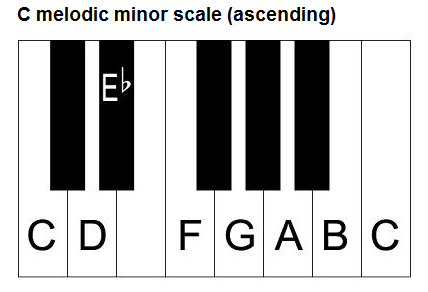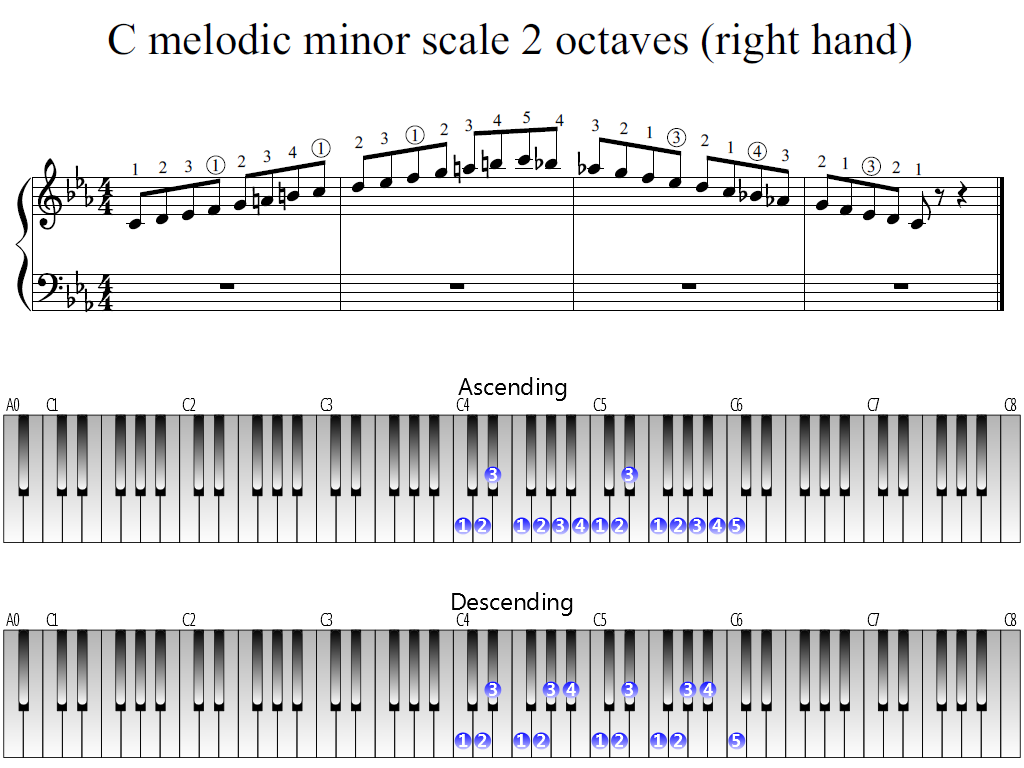Before you study this concept you must have a very good aural understanding of the Major Scale and the Harmonic minor scale (this means you should be confident in recognising what those sound like).
Once you have done that, you're ready to tackle the wee weird one, the melodic minor scale.
Is it the same as the Harmonic Minor Scale?
No, not really. It's not the same as the harmonic minor scale, because it lacks the great big Augmented 2nd that falls between the 6th and 7th degrees of the scale.
However, it does have the flattened 3rd degree of the scale, which means the whole thing starts with a minor tonality... stay with me here.
So is it the same as the major scale then?
No, not really. Let's take a wee look at the C minor Melodic scale so I can try to help you understand what happens here.
 Do you see the E flat here? Play this scale at an instrument if you can. It sounds minor because C-D-Eb is the same as the start of the Harmonic Minor...
Do you see the E flat here? Play this scale at an instrument if you can. It sounds minor because C-D-Eb is the same as the start of the Harmonic Minor...But then do you notice the rest of the way up it continues just the same as if it was the C major scale?
So it's a wee hybrid. First half sounds dark and minor, and second half sounds bright and major.
Then it gets even more interesting.
On the way back down, the melodic minor scale takes a bit of a wander out of what you'd possibly expect to happen. Instead of just following the same pattern it used on the way up, it changes completely.
Look at the key signature here - it's got 3 flat notes. On the way up (which is what this image depicts), you'll see the Ab and Bb are cancelled out by natural signs. This is to ensure the second half of the ascent sounds bright and major.

But the descent, does not feature these accidentals. It follows the key signature exactly. This means it actually sounds like the relative major for a little while (in this case, Eb major is the relative major) because the two scales share that key signature. The melodic minor, however, continues on and finishes on C, which means the final three notes are still dark and minor in tonality.
Play the following notes on an instrument and listen to it. I've put it here in treble notation and a piano diagram.

How do I remember this?
The simplest method is to remember the following mantra: A melodic minor scale starts minor, turns major, and ends minor again.
Why do I need to know this?
Best answer? It's in your course!
No comments:
Post a Comment
All comments will be moderated.